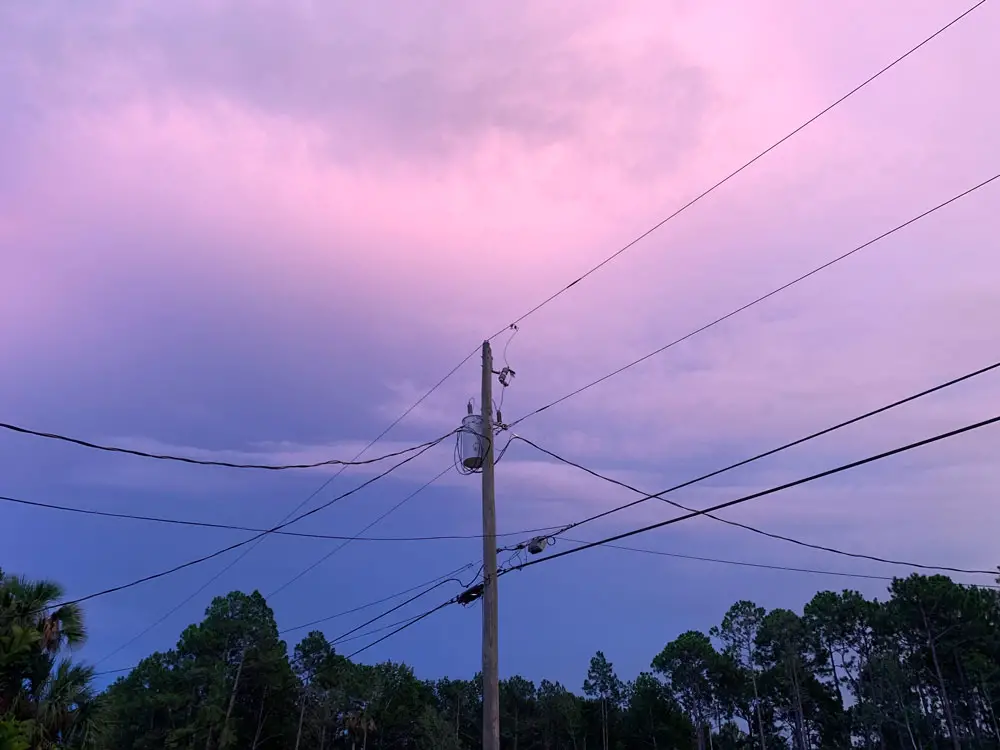
Florida Power & Light on Friday fired back at a renewed request for state regulators to consider a “counter proposal” to a proposed settlement that would increase the utility’s base electric rates.
Opponents of the proposed settlement, including the state Office of Public Counsel, which is designated by law to represent utility customers, want the Florida Public Service Commission to consider the counter proposal. Commission Chairman Mike La Rosa on Sept. 12 denied the request, but the Office of Public Counsel and its allies are seeking reconsideration of that decision.
But in a 32-page document filed Friday, FPL argued the “request for reconsideration collapses under even the most cursory scrutiny and falls far beneath the legal threshold required to warrant reconsideration before this commission. Moreover, even assuming … that their request met the standard required for reconsideration, which it does not, the (opponents’) arguments are legally indefensible and wholly without merit.”
The sparring about the counter proposal has come as the regulatory commission prepares for the Oct. 6 start of what could be a two-week hearing on FPL’s proposed four-year settlement, which it reached in August with numerous businesses and groups. The hearing will include complex financial and technical issues and likely will be contentious. [FPL is the sole provider of electricity to consumers in Flagler County.]
After the FPL settlement was proposed, the Office of Public Counsel and consumer groups last month filed a competing settlement proposal that, in part, would lead to smaller rate increases. But La Rosa, acting as a prehearing officer in the case, dismissed the counter proposal, ruling that FPL is an “indispensable party to any settlement.”
Attorneys for the opponents on Sept. 19 filed a motion for reconsideration, saying the Florida Supreme Court has never ruled on whether a utility would have to be a party to a settlement.
“If the commission were to find that the terms of the (counter proposal) were in the public interest, and that the (counter proposal) would result in fair, just, and reasonable rates, then the commission would have just as much authority to approve it without FPL’s consent or over FPL’s objection,” the motion for reconsideration said.
Also, the motion said the regulatory commission’s authority to set utility rates is “not conditioned on any party’s approval or absence of objection, including FPL.”
But in the document filed Friday, FPL said “there simply is no authority or precedent to support the proposition that the commission can resolve a contested matter by approving a settlement or stipulation that does not include the utility in question.”
“This approach, if permitted, would open the floodgates to multiple competing ‘settlements’ among differently aligned intervenors that do not include the utility,” FPL attorneys wrote. “In other words, intervenors representing endless combinations of aligned interests could settle with themselves — all in the same proceeding and without the utility — in multiple versions of ‘settlements.’ This approach to ‘settlement’ defies logic because it does not result in the resolution of a dispute between opposing parties — it merely memorializes an agreement among aligned parties.”
FPL filed an initial rate proposal in February but scaled it back in the proposed settlement filed Aug. 20. FPL reached its proposed settlement with the Florida Industrial Power Users Group; the Florida Retail Federation; the Florida Energy for Innovation Association; Americans for Affordable Clean Energy; the Southern Alliance for Clean Energy; Walmart Inc.; EVgo Services, LLC; Circle K Stores, Inc.; RaceTrac Inc.; Wawa, Inc.; Electrify America, LLC; Armstrong World Industries, Inc.; and federal government agencies.
The proposed settlement would lead to base-rate increases of $945 million in 2026 and $766 million in 2027, according to the utility. FPL also would collect additional amounts in 2028 and 2029 for solar-energy and battery-storage projects.
The counter proposal, which was filed Aug. 26, would have resulted in increases of $867 million in 2026 and $403 million in 2027. It also would have left open the possibility of FPL seeking increases of an estimated $195 million in 2028 and $174 million in 2029 for generation-related projects that could include solar and battery projects.
The Office of Public Counsel and its allies said the FPL proposal could lead to cumulative increases over four years of $6.903 billion, while the counter proposal would total $5.241 billion.
Along with the Office of Public Counsel, the counter proposal was filed by the groups Florida Rising, the League of United Latin American Citizens of Florida, Environmental Confederation of Southwest Florida and Floridians Against Increased Rates
–Jim Saunders, News Service of Florida




























Ray W. says
Speaking of energy costs, the Dallas Fed recently published its quarterly survey responses by Midwest oil and natural gas industry executives, including their anonymous thoughts.
Here are some bullet points from a Houston Chronicle story about the survey:
– “[T]he report showed a continued decline in activity for the industry.”
– “The U.S. oil and gas industry has faced increasingly volatile markets this year.”
– “… [F]irms said new policies such as the One Big Beautiful Bill may only slightly increase the amount they are able to produce, even with billions in tax breaks expected.”
– One anonymous comment by an industry executive reads:
“The U.S. shale business is broken. … What was once the world’s most dynamic energy engine has been gutted by political hostility and economic ignorance. The previous administration vilified the industry, buried it in regulation and cheered the flight of capital under the environmental, social and governance banner. Wall Street and pension funds walked away, and even private equity shifted from fueling growth to engineering exits. Now the current administration is finishing the job.”
– Another anonymous executive wrote:
“The noise and chaos is deafening! … Who wants to make a business decision in this unstable environment?”
– A third wrote:
“The administration is pushing for $40 per barrel crude oil, and with tariffs on foreign tubular goods, [input] prices are up, and drilling is going to disappear. … The oil industry is once again going to lose valuable employees.”
Focusing away from the Houston Chronicle story, I located the Dallas Fed survey.
The Dallas Fed explains its survey process as follows:
“Data were collected September 10-18, and 139 energy firms responded. Of the respondents, 93 were exploration and production firms and 46 were oilfield services firms.
“The Dallas Fed conducts the Dallas Fed Energy Survey quarterly to obtain a timely assessment of energy activity among oil and gas firms located or headquartered in the Eleventh District. The Eleventh District encompasses Texas, northern Louisiana and southern New Mexico. Firms are asked whether business activity, employment, capital expenditures and other indicators increased, decreased or remained unchanged compared with the prior quarter and with the same quarter a year ago. Survey responses are used to calculate an index for each indicator. Each index is calculated by subtracting the percentage of respondents reporting a decrease from the percentage reporting an increase. When the share of firms reporting an increase exceeds the share reporting a decrease, the index will be greater than zero, suggesting the indicator has increased over the previous quarter. If the share of firms reporting a decrease exceeds the share reporting an increase, the index will be below zero, suggesting the indicator has decreased over the previous quarter.”
The survey story starts thus:
Business activity index: -6.5 for the third quarter, but that was less than the -8.1 in the second quarter. (This suggests that more companies reported negative business activity than did those firms that reported neutral or positive business activity)
Company outlook index: -17.6 for the third quarter, down from -6.4 in the second quarter. (This suggests that more firms reported company outlook as negative than did firms report company outlook as neutral or positive)
Outlook uncertainty index: 44.6 for the third quarter, down from 47.1 in the second quarter. (This suggests that more firms reported outlook as uncertain than did firms that reported unchanged or decreased outlook uncertainty)
Oil production index: -8.6 for the third quarter, unchanged from the second quarter.
(This suggests that more firms reported decreased oil production than did those that reported unchanged or increased production)
Gas production index: -3.2 for the third quarter, unchanged from the second quarter. (This suggests that more firms reported decreased gas production than did those that reported unchanged or increased production)
Input cost index among oilfield services firms: 34.8 for the third quarter, down from 40.0 in the second quarter. (This suggests that significantly more firms reported increased costs than did firms report decreased or unchanged costs)
Finding and development costs index among exploration and development firms: 22.0 for the third quarter, up from 11.4 in the second quarter. (This suggests that more E&P firms reported rising finding and development costs than did firms report unchanged or falling costs)
“Oilfield services firms reported modest deterioration in nearly all indicators.”
Make of this what you will.
Ray W. says
Here are excerpts from a CNBC story about the Dallas Fed survey:
– “President Donald Trump’s push for lower oil prices, higher tariffs and the resulting policy uncertainty are hurting investment, shale executives said.”
– “Nearly 80% of oil companies surveyed by the Dallas Fed have delayed investment due to questions about the future price of oil and the cost of producing it.”
– One executive wrote:
“We have begun the twilight of shale. … The writing is on the wall.”
– Another executive wrote that “drilling is going to disappear” as President Trump pushes for $40 per barrel oil.
– A third executive wrote that because President Trump is aligning his administration with OPEC+ to increase oil supply, he is “kneecapping U.S. producers in the process.”
That executive went on to write:
“Guided by a U.S. Department of Energy that tells them what they want to hear instead of hard facts, they (the Trump administration) operate with little understanding of shale economics.”
– 51% of survey respondents said that regulatory changes after this past January have reduced their breakeven costs by less than $1 per barrel.
Make of this what you will.
Me?
For over four years now, back when OPEC+ first announced a plan to manipulate the price of crude oil in the international marketplace, I have been commenting to FlaglerLive readers on how American oil extractors have responded to that manipulation. I did so because energy is one of the issues that the professional lying class that sits atop one of our two political parties most commonly lies about.
During the 2024 presidential campaign, President Trump repeatedly lied to the electorate about how he was going to cut the cost of energy by 50% in one year, or 18 months at the most.
On January 20, 2025, the average national price for a gallon of regular gas at the pump was just under $3.13. According to AAA, as of today, the average national price for a gallon of regular gas at the pump is $3.135.
Electricity prices are up all over the country, and FP&L is seeking a further rate increase. Several of the more gullibly stupid among us claim that energy prices are getting better and that they are going to continue to get better. President Trump has gutted subsidies for two of the most cost efficient forms of electricity production (solar and onshore wind) and increased subsidies for natural gas, which is comparatively a more expensive form of electricity production, in the belief that building more expensive forms of electricity production is better than building less expensive forms of electricity production.
President Trump is extending the lifespan of coal plants by executive order. I have commented on this subject many times. Coal is one of the least cost efficient forms of producing energy. Some 30 years ago, long before the Shale Revolution, FP&L obligated itself by contract to purchase electricity from two coal-fired plants. When the price of natural gas began to plummet, the cost to produce electricity from gas-fired plants dropped. Faced with the obligation to pay under contract more for coal-fired electricity, FP&L simply bought the two coal-fired plants and shut them down.
I commented to FlaglerLive readers a few months ago about a Michigan utility company building a new more efficient plant to replace an aging and more expensive coal-fired plant. Just days before the anticipated coal-fired plant shutdown, the Trump administration ordered that it would stay open, even though the utility company didn’t need the electricity it produced, at a cost to electricity customers of roughly $1 million dollars per day. The initial 90-day order was recently renewed, so Michigan customers continue to pay for electricity that they don’t need at a cost of roughly $1 million per day.
Ray W. says
Bloomberg also posted an article derived from the Dallas Fed’s Survey. Much of the article tracks points made in stories for my two previous comments about the survey, but one new oil executive comment resonated:
“The downward pressure on oil prices coupled with continued tightness in finding qualified labor in remote locations continues to pressure profitability and dividends.”
Another point in the Bloomberg story set the drop in the number of American drilling rigs actively in operation has dropped 13% thus far this year.
Make of this what you will.
Ray W. says
Reuters published its own story about the Dallas Fed Survey. Again, much of the story coincides with other stories on the subject, but the reporter gleaned a narrow segment that expanded on the other stories.
One of the oil executives anonymously responded to the survey through a different lens, a lens on the fact that the U.S. is sitting on plenty of oil, but that it does not have much in the way of $60 per barrel oil: “… [T]he U.S. isn’t running out of oil, but she sure is running out of $60 per barrel oil.”
I interpret this to mean that American energy companies are running out of the last of the low hanging fruit in American oil reserves. New oil will likely be harder to find, harder to reach by drilling, harder to extract, and more and more remote from transport infrastructure.
In a related point, the reporter wrote of American oil companies searching for easier to find oil are looking elsewhere in the world. This past March, wrote the reporter, Continental Resources signed a deal with a Turkish oil company to develop shale fields in the Diyarbakir Basin. Houston-based EOG Resources entered the “upstream sector” in both Bahrain and the United Arab Emirates. According to the reporter, more that three-quarters of the responding oil executives expect to see shale oil drilling to reach economic viability in the international sector within the next 10 years.
Make of this what you will.
Me?
Oil companies follow profits. That is their reason for being. If they can develop shale fields in Turkey to produce oil at a cost point of $50 per barrel at a time when cheap oil in American shale fields is becoming more and more scarce, which fields will receive their attention?
This is something that Dennis C. Rathsam will never understand because he takes at face value things said by professional liars.
There is a lot of public land in New Mexico that can be put up for lease for oil exploration. But there are few rail lines in the state, and paved highways are rare. Crude oil pipeline infrastructure is practically nonexistent. Leasing public land for oil exploration in New Mexico is worthless if the site is a hundred miles from nowhere, with no means to get the oil to market if it is found. The Permian Basin has been a hotbed of exploration because it already has a vast network of oil and gas pipelines to Houston, built over the last century. With technological breakthroughs in fracking fluids, horizontal drilling methods, and 3-D imaging, all a Permian Basin oil company needs to do is run a 3-D imager over an already existing well. If a large deposit of oil remains, the company can use the old well to guide a new bore into the oil reserve, frack it, and the oil will flow. The pipeline hooked up to the old well already exists. Why drill in New Mexico? Why build a new pipeline in New Mexico?
Article after article establishes the breakeven point for shale oil in the Permian Basin at $60 per barrel, give or take, but that is the overall cost of finding the oil and getting it to market, including company costs. The extraction cost is said to be, on average, somewhere around $25 per barrel. But Saudi oil is not shale oil; it is pooled oil. The extraction cost of Saudi oil, on average, is said to range from $8 per barrel to $10 per barrel, which means that American shale oil producers are at a significant financial disadvantage to Saudi oil.
Is it possible that American shale oil will, in a very short time, become less and less competitive in the international crude oil marketplace as less and less $60 per barrel oil is out there to be exploited?
Pogo says
@Ray W
Thank you for your continuing focus on what matters.
And now, the sound of Trump’s economy — and October looming…
Pogo says
@The more you know
…the more you know.
People are saying
https://usma.com/
Ray W. says
Barchart published its own take on the international energy marketplace. Here are some bullet points from the story:
– Per information provided by an OPEC delegate, the cartel meets this coming Sunday to consider “fast-tracking” its earlier reached decision to increase crude oil output by 1.66 million barrels per day. If the cartel agrees to the “fast-tracking” position, oil production will rise by 500,000 barrel per day for each of the next three months, starting in November.
– According to the reporter, OPEC’s original production boost plan was to incrementally add a total of 2.2 million barrels of crude oil production into the international marketplace by September 2026.
– According to EIA projections, “the global oil market is headed for a record surplus next year of 3.33 million bpd, about 360,000 bpd more than they projected a month ago, as OPEC+ continues to revive production.”
– Last Monday, Iraq announced that it has settled a two-year-long payment dispute with Kurdish authorities and as much as 500,000 barrels per day of Kurdish crude oil will soon resume its pipeline flow to Turkey.
– In August, India’s demand for crude oil dropped by 2.9%, year-over-year.
– For the week ending September 26, the total quantity of crude oil held stationary for more than seven days rose 3.7% week-over-week to 81.95 million barrels.
– After a concerted effort by the Ukraine to disrupt Russian refinery and oil infrastructure, total Russian output of refined oil products has dropped to 1.94 million barrels per day during the first half of September, the lowest such flow in over 3.25 years.
– As of last Wednesday, EIA figures show:
1. U.S. crude oil inventories 4.4% lower than the seasonal five-year average.
2. U.S. gasoline inventories 1.7% lower than the seasonal five-year average.
3. U.S. distillate inventories 7.2% lower than the seasonal five-year average.
4. U.S. crude oil production weekly averaged 13.501 million barrels per day for the week ending on September 19, up 0.1% from the week before, but down from the record set for the week ending on December 6, 2024, when it averaged 13.631 million barrels per day for the week.
– Baker Hughes reported last Friday that oil rig count (not including gas rig count) rose by 6 over the week before, but it remained down from the 5.5 year high of 627 oil rigs in operation set in December 2022.
Make of this what you will.
Me?
I repeatedly comment on oil and gas industry data in part to show to FlaglerLive readers the incredible complexity of the international energy marketplace.
A refinery in Indiana shuts down after an explosion and oil destined for the refinery immediately begins flowing somewhere else. America places tariffs on Canadian natural gas and Canadian producers negotiate a first ever series of shipments of liquefied natural gas to Korea. A president promises a 50% reduction in gasoline prices in 12 months, should he be elected, and oil companies continually find ways to keep international prices up, so as to maintain their profitability.
Let’s face it. Seventeen years ago, a Canadian oil company announced plans to build a northern XL pipeline and a southern XL pipeline. At the time of the announcement, there was a need for such a pipeline, as the American Shale Revolution had not yet begun.
Within a few years of the onset of the Shale Revolution, it became readily apparent that there was no longer an economic need to build the northern leg of the XL pipeline. Every pipeline leading south to Houston was filled to capacity.
The southern leg of the XL pipeline opened in January 2014. On the day of its opening, it too was immediately filled to capacity by much of the newly found North Dakota crude oil that had previously been transported to Houston area refineries by rail tank car.
In 2014, legislation prohibiting the export of American crude oil was still in place, meaning that all of the newly-found crude oil in American oil fields had to go to American refineries. Soon, there was no capacity left in U.S. refineries for additional American crude oil. Again, with the southern leg of the XL pipeline filled to capacity, the economic need for the northern leg of the XL pipeline was gone.
By the time our federal legislature repealed the 40-year-old ban on any export of American crude oil, we were still producing so much American oil that we didn’t need more Canadian oil.
Canada set out to build its own trans-Canada XL pipeline to Vancouver, which opened a few years ago. Right now, the Canadian crude oil that was intended 17 years ago to be sent to Houston is being sent to western Canada, in part for export.
As American crude oil production continued to rise, American refineries in the Southwest had access to more crude oil than they could refine.
More and more American crude oil was directed to ports in the Houston area for export. In time, these ports reached maximum export capacity.
In 2024, the Biden administration issued permits for a deepwater export platform in the Gulf, with American crude oil to be pumped to the deepwater platform by underwater pipelines.
In 2025, the Trump administration issued a second set of permits for the construction of a second deepwater export platform in the Gulf.
In sum, by about 2012, the economic argument for the northern leg of the XL pipeline had disappeared, but the political argument remained, an argument that works only if the recipient is gullibly stupid enough to accept the political argument at face value. Oil company executives simply do not spend billions of dollars on economically unfeasible projects.
The only way that the northern leg of the XL pipeline returns to economic viability is if a second southern leg of the XL pipeline is built. No such plan for a second southern leg exists.
But I have to concede that had the northern leg of the XL pipeline actually been built, and had the southern leg of the XL pipeline been filled by Canadian oil, then the displaced North Dakota crude oil would have had to have returned to transport by rail tank car to Houston. Since rail transport costs for oil transport are roughly triple that charged by pipeline owners, American companies would have had to have paid the higher transport fees.
Ray W. says
On a related energy issue, OptiFuel, according to BioMass Magazine, intends to begin a second-stage two-year, 1 million mile, national testing of 10 of its Class 1 renewable natural gas (RNG) locomotives, accompanied by 5 of its RNG tenders, as a preliminary step to obtaining approval to begin selling its products to rail lines. The Federal Railroad Administration’s Transportation Technology Center is already overseeing an initial 12-month stage of testing.
OptiFuel intends to begin full-scale manufacture of its locomotives in 2028.
Each Class 1 locomotive will sell for an estimated $5.5 million. Currently, there are in operation across the United States some 38,000 Class 1 locomotives. According to the reporter, OptiFuel’s RNG-powered locomotives are expected to reduce operational fuel costs by 25% and increase operating range by 25%. The RNG-powered Cummins engines emit zero nitrogen oxides and zero particulate matter.
The OptiFuel business model includes its construction and staffing of refueling sites at no cost to buyers, other than a buyer agreeing to pay for a 10-year term the diesel equivalent of $2 per gallon for the RNG fuel needed to operate the locomotives. The company anticipates a need for 60 locomotive and tender refueling stations across the United States.
From other articles on which I have based comments, OptiFuel plans to build biomass natural gas plants using natural gas generated at landfills. Where needed, OptiFuel will use natural gas obtained on the open market.
Current diesel-electric locomotive design uses a single diesel engine that produces between 4500 and 6000 horsepower, with the engine driving a generator that keeps a battery charged. If the diesel engine fails, there is enough battery power for some 30-40 miles, enough to get a train to a side track so as not to block the main rail line.
OptiFuel’s locomotive uses 10 modular 510-horsepower Cummins semi-tractor engines modified to run on natural gas, plus five more such engines fitted into the tender. Should one engine fail during a long-haul run, when the freight train stops at a refueling station to pick up a new fully-fueled tender and drop off the old tender for refueling, the ailing engine can be removed by a forklift and a new modular engine be reinserted in its place. According to OptiFuel, this design lessens locomotive downtime, as the ailing engine can be swapped out in less than an hour.
In 2022, OptiFuel signed a contract with the Argentine rail industry to convert 400 traditional diesel-electric locomotives into modular diesel-electric locomotives. The engineering behind the plan involves stripping the standard single diesel-electric locomotive engine and all other superstructure down to the rolling frame and installing the brackets needed to install the 10 modular Cummins natural gas-powered engines and new superstructure onto the existing locomotive frames.
Make of this what you will.
Me?
OptiFuel is not relying on novel technology to offer the rail industry significant savings. It is willing to pay to build the necessary refueling stations and staff them at no cost to a rail company, based on a long-term commitment by a rail company to purchase natural gas at a price point lower than what the rail company already pays for diesel fuel.
Whatever natural gas obtained from biomass to run the locomotive engines means that natural gas extracted from the ground via wells is no longer needed to operate the locomotive, but it can still be exported by LNG companies. And the biomass-generated natural gas via decay would be released into the atmosphere were it not gathered, so the gathering process will cut down on methane emissions that naturally emit into the atmosphere.
The design offers significant savings in maintenance and repair costs. The use of Cummins engines that operate right now in long-haul freight semi-tractors offers reliability.
Ray W. says
I have commented on this form of cost savings to electricity consumers before.
In recent years, demand for electricity has begun to rise, after a long period of stagnation. And, the common centralized form of electricity production (large powerplants) has begun to decentralize with the onset of wind, solar, and tidal electricity generation. Building new transmission capacities, from start to finish, takes between eight to ten years, where feasible, but in built-up regions, such as urban areas, building new transmission capacity is a nearly insurmountable economic process.
So how can the capacity to transmit electricity be expanded quickly and economically?
One possibility is to increase the carrying capacity of high-tension power lines.
Standard high tension wires consist of a conductive steel core, surrounded by aluminum strands of wire (ACSR). This type of power transmission line heats up as more and more electricity is pushed through the line, due to resistance. Most of us understand the resistance concept because we know that toaster wires glow red when household current is pushed through the wire. High tension transmission lines can heat up to as high as 350 degrees Fahrenheit under high summer loads. Such high temperatures cause the lines to sag. If they touch ground or trees, fires can result.
For some 25 years now, companies have been developing a different type of high tension wire with a non-conductive carbon fiber core, surrounded by aluminum strands of wire, in part to reduce powerline sag under heavy load.
One of these companies, Excel Composites, has developed a multi-strand carbon fiber core transmission line with the following characteristics:
– Steel, resistant to conductive electricity, expands due to heat produced at high conductive electrical loads. This type of transmission wire sags at high temperature, causing ground fires when the high-tension lines contact land or trees. And, since steel conducts electricity just as aluminum does, the steel core of the transmission lines direct electricity away from the aluminum strands, thereby increasing energy losses during transport.
– Carbon fiber, being non-conductive, does not promote as much energy loss at higher temperatures. Having a higher tensile strength than does steel, plus a lighter weight, carbon fiber core lines have a “high temperature low sag status.” Carbon fiber’s coefficient of thermal expansion is, at minimum, some 13 times less than that for steel. With less sag at high temperatures of 190 degrees Celsius, carbon fiber core transmission lines do not need to be placed so high in the air as do steel core transmission lines.
– First-generation single fiber carbon fiber core transmission lines carry a risk of breakage when mishandled. Excel Composites partnered with De Angeli Prodotti to produce a multi-strand carbon wire core to give it greater flexibility and resistance to breakage.
– A long-term study of a 50 kilometer (31 mile) segment of Exel Composites multi-strand carbon core wire yielded a 60% increase in ampicity and a reduction in transmission losses of 13.08 GWh per year, giving a reduction of transmission costs of $1.23 million per year for the 31 mile long line. At this rate, utility companies would pay for the new multi-strand carbon fiber core transmission line within two years of installation.
– The European minimum standard of force for power transmission lines is 147 kN. On average, carbon fiber core transmission lines display a force of 210 kN. After multiple experiments, Exel Composites carbon fiber core transmission lines with one of its three strands broken retain a force of 172 kN.
Here is Exel Composites argument:
– “While building new transmission line infrastructure takes up to a decade, reconductoring can be completed within 12-24 months. Advanced carbon fiber composite conductor cores can double the ampicity of the line, also known as the current carrying capacity, addressing immediate challenges in the energy modernization process. …”
Make of this what you will.
Me?
If there exists a product that reduces powerline sag under conditions of high heat, that doubles transmission capacity per line, that maintains more than adequate strength of power line even when the core is damaged, that can be constructed in one-fifth of the standard time of construction, and that can pay for itself in reduced transmission resistance losses in two years or less, what are we waiting for? Trump promised a cut in energy expenses of 50% in 12 months. Here is part of the answer to his promise.
Ray W. says
This is a thought exercise.
New Haven, Connecticut is home to a capped-out landfill, meaning the entire landfill has been covered by two feet of soil and is closed to new waste activity. City leaders set out to find a way to monetize the property.
A solar developer who has already completed 14 solar projects in the city successfully bid to install 1,920 solar panels on the side of the landfill mountain, enough panels to provide power to 200 homes. The bid was a “reverse” auction, during which bidders offered the lowest possible rate at which they would sell the generated solar power.
The solar developer apparently agreed to pay all installation and construction costs at a cost to it of “a few millions”, plus $6,000 per month for 20 years ($1.4 million) to the city.
Make of this what you will.
Ray W. says
A recent story published by The Associated Press – Business News posits that for the first time over the span of an entire month, Brazilian wind and solar power sources provided more that one third of Brazil’s demand for electricity.
Here are some bullet points from the article:
– Emissions from Brazil’s electricity generating sector peaked in 2014. By 2024, emissions from that sector had dropped by 31%, even as electricity demand in the country rose by 22%.
– Brazil’s electricity sector has long had a three-pillar balance, only now the nascent clean energy pillar of wind and solar power has displaced the fossil fuel pillar in importance down to third place, with 14% of the annual electricity sector.
– In 2019, Brazil’s solar power sector provided just over 1% of the nation’s electricity. Five years later, the mix had grown to 9.6% for the year.
– In 2019, Brazil’s wind power sector provided 8.8% of the nation’s electricity. Five years later, the mix had grown to 15% for the year.
Meanwhile, Brazil’s hydropower sector, long the nation’s most productive electricity sector, has seen a slight decline due to drought to 48% of the nation’s electricity production.
Make of this what you will.